
By Leith van Onselen
The Australian Bureau of Statistics (ABS) has released the December Housing Finance data this morning and unlike the Reserve Bank of Australia (RBA) credit aggregates, released earlier in the month, it points to increasing demand for mortgages.
According to the ABS, in seasonally adjusted terms, the number of commitments for owner occupied housing finance rose by 2.3% in the month of December, with the total value of dwelling finance commitments excluding alterations rising by 3.8%.
Below are charts summarising the situation at the national level. The first chart shows a breakdown of the number of housing finance commitments by component. You can see that much of the increase in housing finance commitments over the past year has been driven by refinancings:
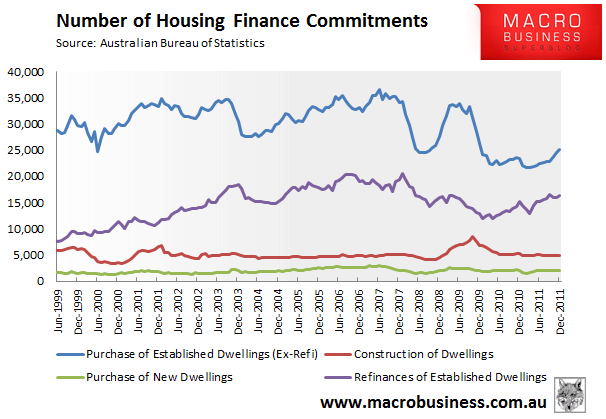
Nevertheless, the number of housing finance commitments (excluding refinancings) has also trended upwards since February 2011; although they remain well below average levels:
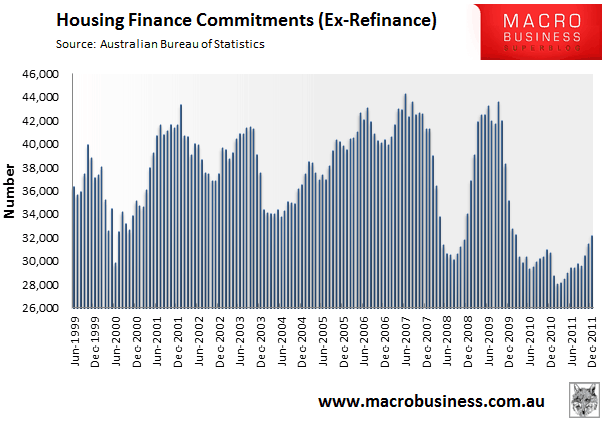
It appears that much of the recent upswing in housing finance commitments has been driven by increased activity from first home buyers (FHBs), who have increased their share of total owner occupied housing finance commitments to 21% from 16% in February 2011:
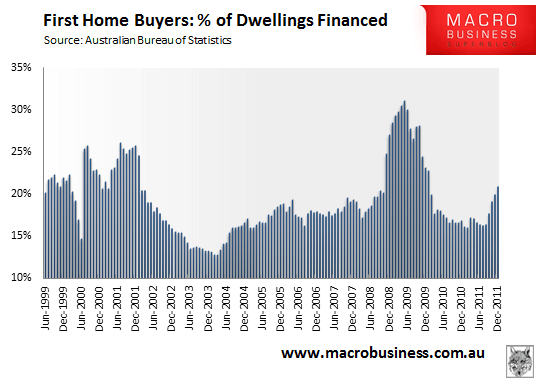
No doubt the housing-addicted broader media will argue that the recent upswing in housing finance commitments as well as the renewed interest from FHBs signals that the housing market is recovering and that solid price growth will soon return. I, however, urge caution in reading too much into these results.
We all know that the New South Wales (NSW) State Government announced in September 2011 that it would end the generous stamp duty concessions provided on pre-existing dwellings on 31 December 2011. Predictably, this announcement led to a surge of buying from NSW first home buyers, which has acted to push-up the national figures in the process.
To illustrate the NSW FHB effect, consider the below charts. The first chart shows the number of housing finance commitments by state (excluding refinancings):
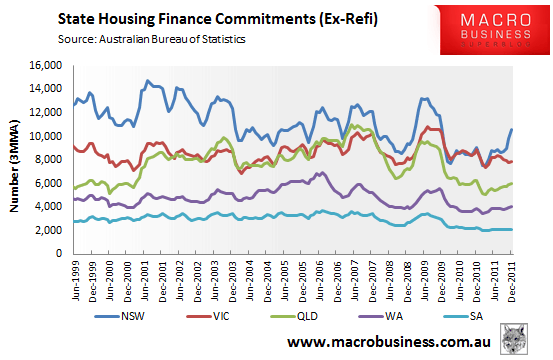
As you can see, the overwhelming majority of the upwards movement in finance commitments has been driven by NSW, with Queensland and Western Australia also increasing modestly.
The NSW FHB effect is even more obvious in the below chart, which shows the number of FHB housing finance commitments by state:
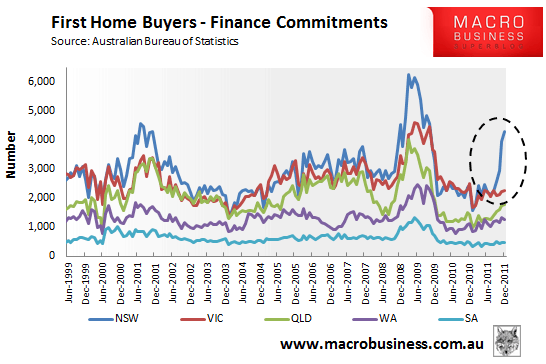
And the below chart shows NSW FHB activity since January 2010. Notice the huge surge upwards after the early-September announcement that stamp duty concessions would end on 31 December 2011:
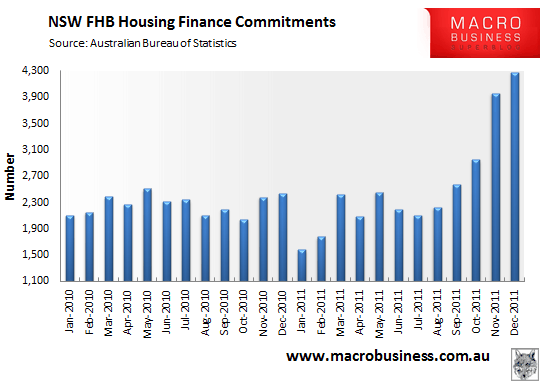
Incredibly, 26% of all NSW housing finance commitments in December were to FHBs. This compares to 21% nationally, 18% in Victoria, 20% in Queensland, 20% in Western Australia, and just 15% in South Australia.
Moreover, the number of NSW FHB finance commitments was 2,048 higher in December 2011 than August 2011. This compares to a 2,395 increase in national housing finance commitments (excluding refinances) over the same period.
Clearly, the overall upswing in housing finance commitments nationally has been driven, by and large, by increased NSW FHB activity as buyers rushed to beat the 31 December deadline for the removal of stamp duty concessions. Given that this deadline has now passed, we can expect some pull-back from NSW FHBs going forward, which should act to reduce overall finance commitments in the months ahead.

